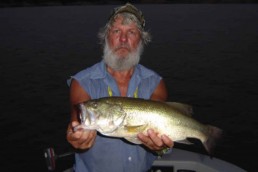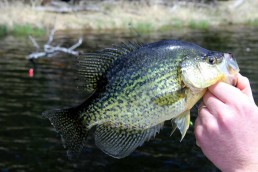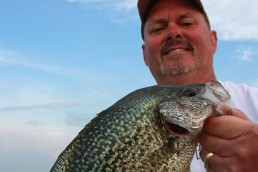‘Red Sky in Morning, Sailor Take Warning … or Not
SHARE THIS POST
Mother Nature, Old Man Winter, Meteora—these are names or terms we give to weather. Weather is an intimate part of life for outdoors enthusiasts, and can be a friend or a foe and make or break fishing, hunting or hiking for many. It can be as unpredictable as a 15-year-old, one minute nice and loving, the next weeping and anxious or angry and belligerent. All living creatures have some sort of weather “sense” or else they wouldn’t survive for long, and we are no different. We can predict changes days in advance, mostly, and it turns out, many animals can too.
Even with all the satellites and smartphones and weather apps, it’s still beneficial to maintain a weather sense. The following are some facts and fiction that might help you keep dry and safe when you don’t have any bars on the screen of your phone and you’re out of network. First, let’s tackle some of the weather sayings that have been around. Most have some basis of fact, but they are more guidelines than rules.
‘Red sky at night, sailor’s delight; red sky in morning, sailor take warning’
This saying comes from the fact that light filters the particles in air that have a red hue more than other, darker colors like violet. A red sunset indicates that a high-pressure system, which concentrates dust and such, is to the west. High pressure usually brings clearer weather, and most of our systems move from the west to the east so fairer weather is then coming. A red sunrise means the high-pressure system has moved past, and the assumption is a low pressure with nastier weather is coming.
‘Swallows fly high, they stay dry; swallows fly low, wet will blow’
This is based on the observation that drier, stable high-pressure systems’ rising warm air thermal currents carry insects higher so insectivores have to fly higher for their meals.
‘When the wooly bear caterpillar’s brown band is wide, a bad winter abides’
This is a quaint myth with no basis or fact. While animals can detect short-term weather changes, they are unable to predict the long-term patterns. We can, but even those long-term computer models and forecasts are taken with a grain of salt.
‘When cicadas fall silent, listen for thunder’
This is based on the fact that cicadas have difficulty vibrating their wings when the humidity is high, so the thought is that they fall silent before rain. This might be a good predictor of humidity, but I wouldn’t trust it to planning my day, especially down in the South where it’s always humid.
Are you enjoying this post?
You can be among the first to get the latest info on where to go, what to use and how to use it!
Deer, other animals you may observe feed heavily before a storm
This is pretty much true. Many animals can detect changes in air pressure and some can detect the low-frequency sounds of thunder, which can make them feed a little more and faster so that they have full bellies before they have to hunker down.
Signs from the sky
There are some weather signs that can be read with a good deal of reliability. And all you have to do is look to the sky. In general, most weather in the Midwest comes from the west. So the sky you see to your west is probably what is going to come to you. The higher the ceiling of the cloud cover, the better the weather. High cirrus clouds are made of ice crystals and will not fall as any type of precipitation. As humidity increases though, clouds do form, a sign that precipitation is conducive and on the way whether you’re just ahead of a cold front or have a warm front overriding colder air.
Mare’s tails are high-altitude wispy cloud formations. These usually mean a calmer, pleasant day is present, or are usually an indication that a cold front is coming through. Warm fronts can produce clouds that accumulate water droplets at the base so they become lower and thicker until they become part of an unstable atmosphere and give you “soaker” rains that farmers and gardeners love.
Changing pressure is still the best predictor of how weather will change. In a high-pressure system, air is moving out, down and clockwise. This means that denser, cooler drier air from the upper atmosphere is moving down and out from the center, hence the clearer skies and cooler weather. The upshot is that if you know whether the barometric pressure is rising or falling you can then make a fair prediction of what weather is coming your way.
As shown in some of the aforementioned sayings above, many animals can sense these changes and act accordingly. The problem is that unless you are on the spot and observe the behavior, it doesn’t do you much good. Some telltale signs—without the aid of an animal—that show high pressure is coming into effect are that smoke rises easier, sounds are more muted and scents are dispersed easier with the high pressure. Conversely, smoke stays closer to the ground and sound is sharper with low pressure.
While weather can’t be always predicted with 100-percent accuracy, the more you observe all the things happening around you outdoors the more reliable you can become at becoming your own forecaster.
MWO
SHARE THIS POST
Did you enjoy this post?
You can be among the first to get the latest info on where to go, what to use and how to use it!
Doug Thalacker
Doug Thalacker has a Masters of Environment Science from UW-SP and taught high school environmental science and earth science. He has outdoor/wilderness training through Outward Bound and American Red Cross. He has a lifetime of enjoying any activity that involves fields, woods or waters.



